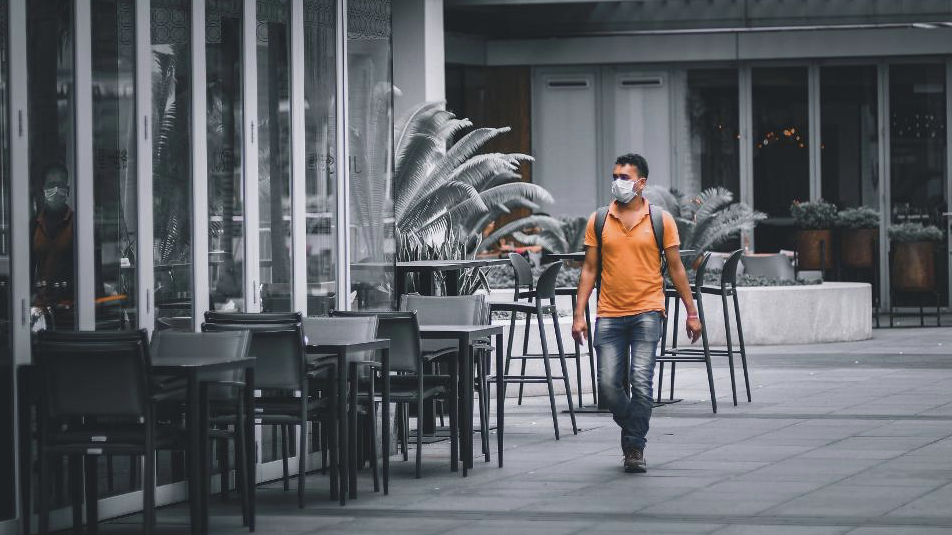We’re now effectively one month into social isolation in Canada. How have you seen supply chain volume change since we last spoke?
William McKinnon: What we’re starting to see in the food side of our business is that the month of March was very robust. In April, we’re starting to see those levels return to what we’d expect to see, or just below normal. Most people are stocked up, and are now purchasing less.
Everyone is “pantry-loaded”!
WM: Exactly! Now, in the food sector, we’re seeing our customers working toward building up their inventory levels. However, they’re only building back where they have the highest level of turnover. So they’re being very cautious of how they are working up their inventories. If they had slow moving SKUs that they would normally maintain as part of their portfolio of products, the loads of those SKUs are often either being reduced in size, or not being replenished.
My sense is at the retail level, grocers are prioritizing their shelf space to represent products that have a high turnover, and likely, decent profit margins. So consequently, if something is a low turning, low margin product, they’re eliminating those products.
So the supply chain is still under strain, and manufacturers are now pivoting toward products that are most likely to be sold.
WM: Precisely. They’re the most popular products, I think, and this is where the energy really makes sense behind certain SKUs. If you go into your local grocery store, you’ll see a lot of vacancies on shelves. Typically, those vacancies were occupied by products that were not as popular as some other products which are stocked there.
Manufacturers are probably triaging, and figuring out that it’s not as efficient to produce certain products at this time. They want to run products that are sure to sell.
What are the implications of that strategy?
WM: This really positions grocers to optimize their business. Now, it’s less about choice and more about function, and that is a very powerful distinction.
If we look at our other non-food customers, we’re seeing many businesses not selling or moving as much product as they once were, or even worse, they’re being forced to close. Because of this, aspects of the supply chain are seeing a period of malaise. It’s just not moving as it once was.
We have several smaller customers that were working on what we call an “auto-replenishment” schedule, which means every week or so a customer would automatically receive a small shipment. Some of these shipments are now being returned to us, because the businesses to which we are shipping have permanently shut their doors. We’re seeing more of this as more businesses are impacted by the economic slowdown caused by Covid-19.
That’s another way that storage and transportation services are being used ineffectively, isn’t it? Shipping a package out only to have it come back in.
WM: I look at our overall transportation business today, and I’m seeing a real shift. In March, we had lots of orders with lots of weight. Today, we’re seeing fewer, lighter orders. All of this is driven by business and consumer spending.
Consumers are preserving cash right now, because they don’t know what the future holds. This is where we’re seeing the economy really start to slow down.
What kind of products were you seeing in these auto-replenishment schemes that are now being returned?
WM: We do have a category of customers that ship to wholesalers versus into the retailer sector. I’d say that it’s this wholesale sector that is seeing a decline right now, because wholesalers or distributors are now carrying less inventory, because they’re also concerned about cash flow and sales.
How have recent fluctuations in the price of fuel impacted the transportation sector?
WM: It’s interesting. Ultimately, fuel surcharges will decline—there’s always a lag of about a month. So there will be some savings in fuel surcharges, but I think the bigger challenge in transportation is about the effective utilization of equipment.
As the economy slows, companies will be consolidating volumes and running less frequent schedules. Ultimately, if they do that, there will be some retraction in the capacity that currently exists out in the marketplace to move products from Point A to Point B. This is where supply and demand equalizes over time.
Overall, I think companies will be able to save a bit of money on fuel surcharges, but fuel isn’t the biggest cost of transportation. The biggest cost is the capital equipment, and ensuring the efficient management of those assets going forward.
Is customer cash flow having an impact on the types of services you’re able to provide?
WM: I think from our perspective, it’s important for our customers to stay current on their invoices. We hold our customer’s inventory, which gives us some leverage in that regard and most of our customers are in good shape.
We aren’t seeing that product has stopped moving entirely. We’re just seeing that product movement is slowing down. That’s a fact of our economy right now. But overall, our contractual agreements are being satisfied, which means we’re able to keep providing these services for our customers.
We are still finding companies who are seeing relatively strong business, and are interested in joining our company as a new customer. That’s very good news. Decision making has not come to a halt, though people may think it has.
However, for other customers that are uncertain about cash flow and demand, they may be delaying those decisions.
Depending on what sector customers are in, their levels may even be better than normal; but if sales are down, a customer will be more cautious. It’s precisely at that moment of reticence that a customer might look to a 3PL. Maybe they’re starting to realize that as inventory levels decline, it would be more effective to purchase space on an internal basis, from a company like Canadian Alliance Terminals. This contrasts the fixed cost of having an allotted building which may or may not be full of product. I think we’ll see those shifts happen over the next three or four months.
Early days on that, but if social distancing needs to persist for the next few months, I think companies will need to find ways to be more agile in their fixed costs.
What good news has come out of the industry lately?
WM: Good news is that it’s still business as usual for us as we work toward opening our new facility. We feel demand is still very strong in the marketplace. There are challenges around completion deadlines related to social distancing, construction, and permitting, but we are still seeing movement and demand, which is fantastic news.
So people are still willing to make those decisions to engage in new business and to move products—companies are still wanting to get things done.
WM: Exactly. I was out at the Sea Way Site this week and there is a lot of activity happening out there. You wouldn’t know we were working under any pretense other than business as usual; you certainly wouldn’t know we were dealing with a global pandemic. Though of course, we have instituted more stringent hygiene and personal distance requirements.
It seems the most likely next steps will be the staggered reintroduction of public gatherings. People don’t seem to be getting depressed, just bored.
WM: I agree completely. For businesses that are directly related to consumer spending, like restaurants and small shops, it can be really tricky. If you’re a barber or a hairstylist, all of that business has effectively been closed for a month now—and those small businesses are not necessarily fortified to weather the storm. That’s a huge challenge.
How are you seeing contingency plans enacted on the part of manufacturers and 3PLs?
WM: From our perspective, as far as health and safety protocols, I think we now have a much higher awareness about sanitation on a personal level, and I think this is a really good thing. Personally, I run a lot, and I find myself running down the middle of the road now to avoid sidewalk traffic!
So protocols like this, I believe, will continue into the future, and perhaps could even help us mitigate outbreaks of viruses like the common cold. You know how a cold will ripple through an office every year? Maybe these new practices will make a real difference.
I think this new awareness is extremely powerful. I think Covid-19 represents a wake-up call for all of us doing business in the Western world to operate in a more conscientious, sanitary manner. Maybe that is the lesson in all of this.

